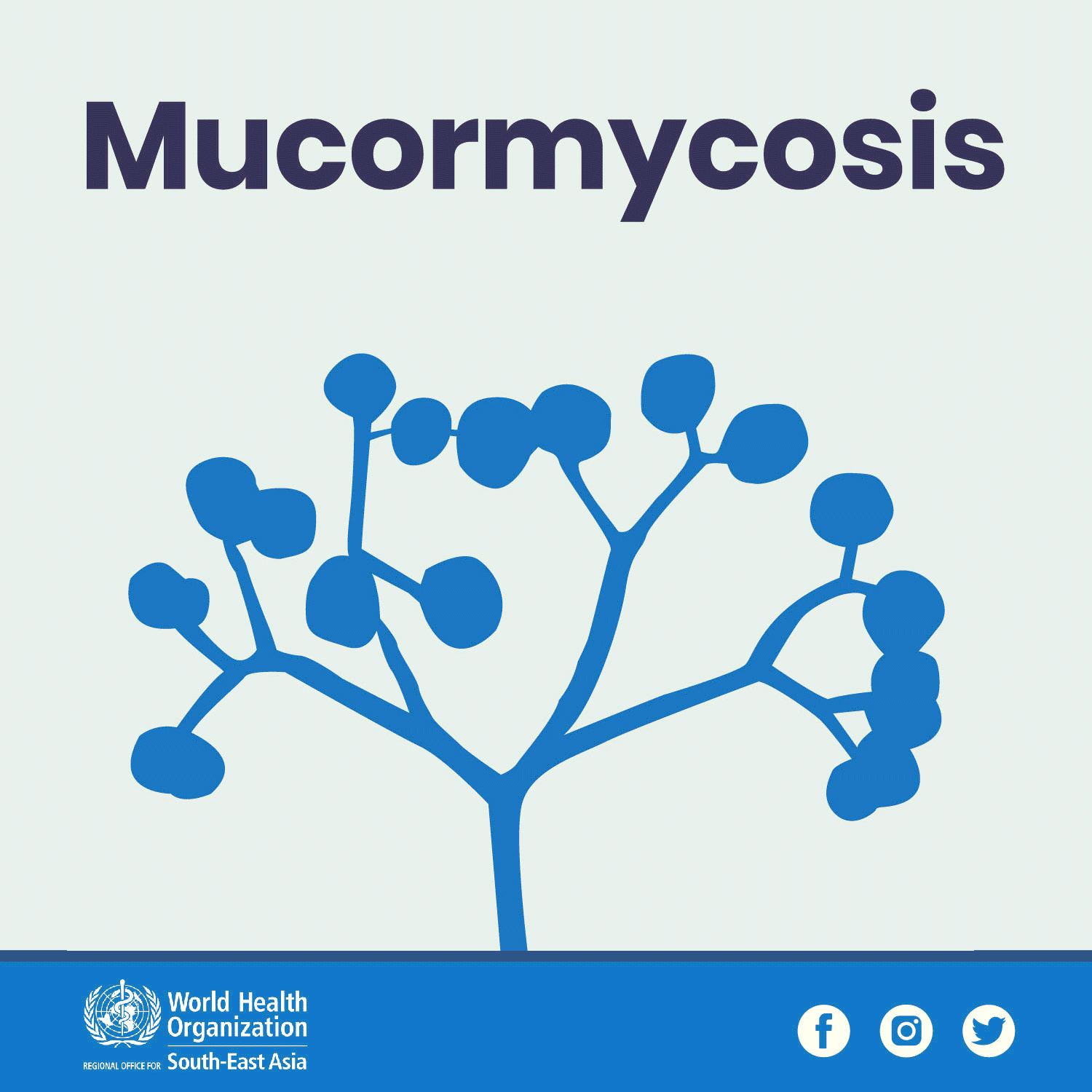Mucormycosis

Mucormycosis
Mucormycosis is a serious but rare fungal infection, caused by the ‘Mucormycetes’ group of fungi.
It has been incorrectly called ‘Black Fungus’ recently, but the fungi causing Mucormycosis are of a variety of colors.
Who is at risk?
In most people, the fungi do not cause harm. There is a greater risk of infection in people:
- With diabetes
- Who have had treatment with higher doses or longer courses of steroids
- With cancer
- With HIV/AIDS
- Who have weak immune systems for other reasons
Recently many people with COVID-19 have been diagnosed with Mucormycosis. It is not currently known whether this is due to COVID-19 or some other reason.
How does infection spread?
- The fungi are found throughout the environment, and most people breathe them in without any effect.
- People with a weak immune system can develop infection in the sinuses and lungs when the fungi enter their airways.
- In rare cases, skin infection occurs, usually only affect a skin injury.
- They do not spread from person to person.
- In some rare cases, it has been known to affect the gastro-intestinal area.
How can I recognize it?
Some common symptoms of Mucormycosis are:
- Swelling of the face and around the eye, usually on one side
- Facial pain or headache, usually on one side
- Red eye, usually on one side
- Black patches on the nose or the roof of the mouth: if you have these, please speak to a health care provider urgently
- Fever
Many of these symptoms, such as fever and headache, are also common symptoms of other diseases, including COVID-19.
Mucormycosis needs to be confirmed through a laboratory test by your health care provider. If you are at greater risk and have these symptoms, consult your health care provider.
How is Mucormycosis detected?
The usual way to confirm is for a health care provider to
- take a sample from the inside of your nose or a sinus for laboratory testing,
- to see the fungus under a microscope or grow it using ‘fungal culture’.
- Also conduct scans or camera-based (endoscopy) tests of the sinuses, the head or the lungs might also be helpful if advised by your health care provider.
What is the Treatment?
Strictly follow your healthcare provider’s advice
- Mucormycosis needs to be treated with antifungal medicines. These can only be used with the prescription of a health care provider.
- In some cases, surgery may also be needed around the eyes and nose.
- Do not self-medicate – these drugs can have harmful effects if they are not used properly.
How can we protect ourselves?
Most healthy people are at very low risk of this disease.
There is no vaccine for Mucormycosis.
Those at higher risk (see the ‘Who is at risk section) could reduce their risk by protecting themselves from the fungi in the environment:
- Avoid areas with a lot of dust, like construction sites
- Avoid damp buildings such as those damaged by water, for example, due to floods and cyclones
- Avoid close contact with soil
- Wear clothes that cover your arms and legs while working outdoors, and wear shoes while for outdoor work
- If you cut your skin, clean the injury area with soap and water












